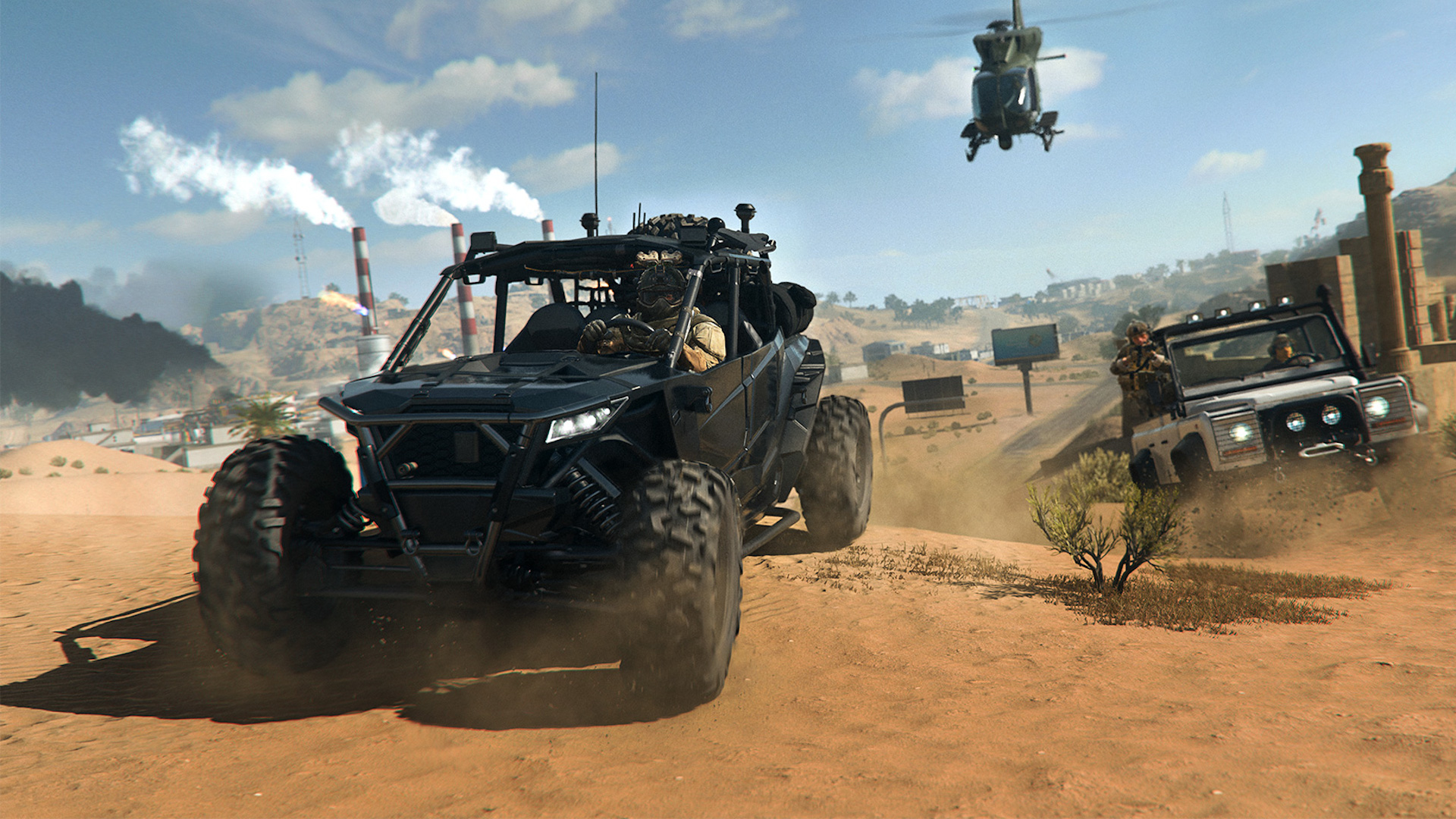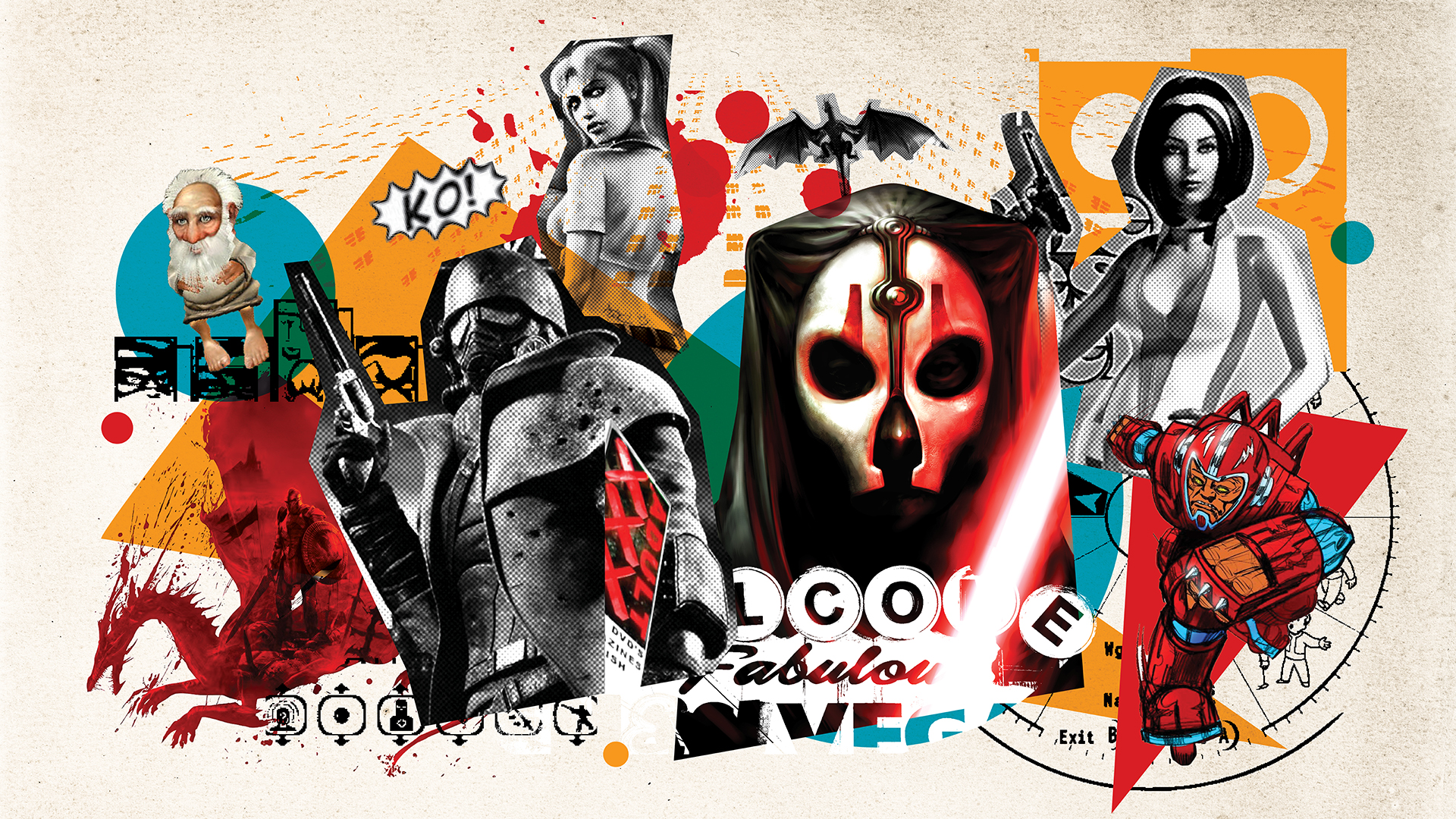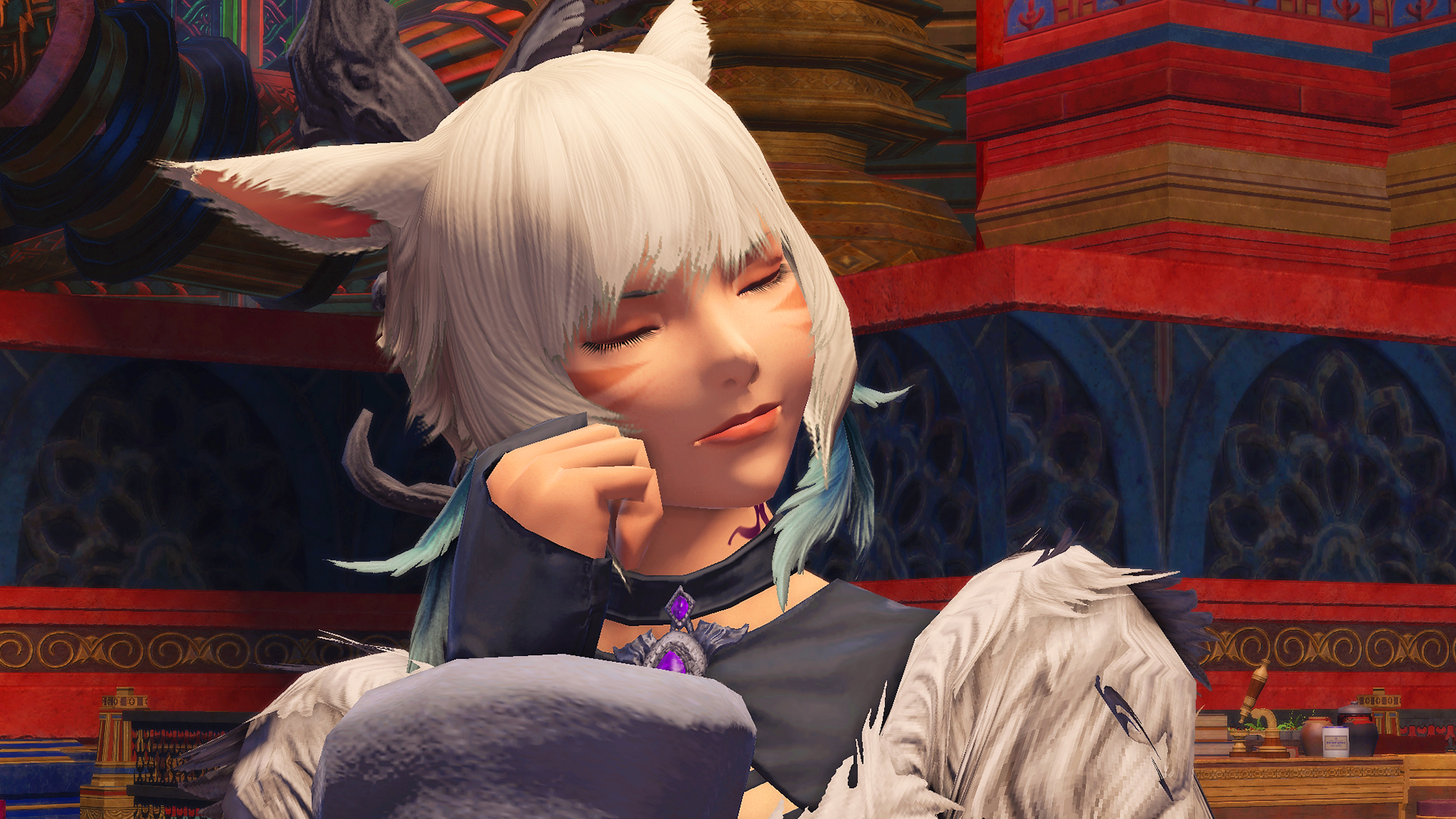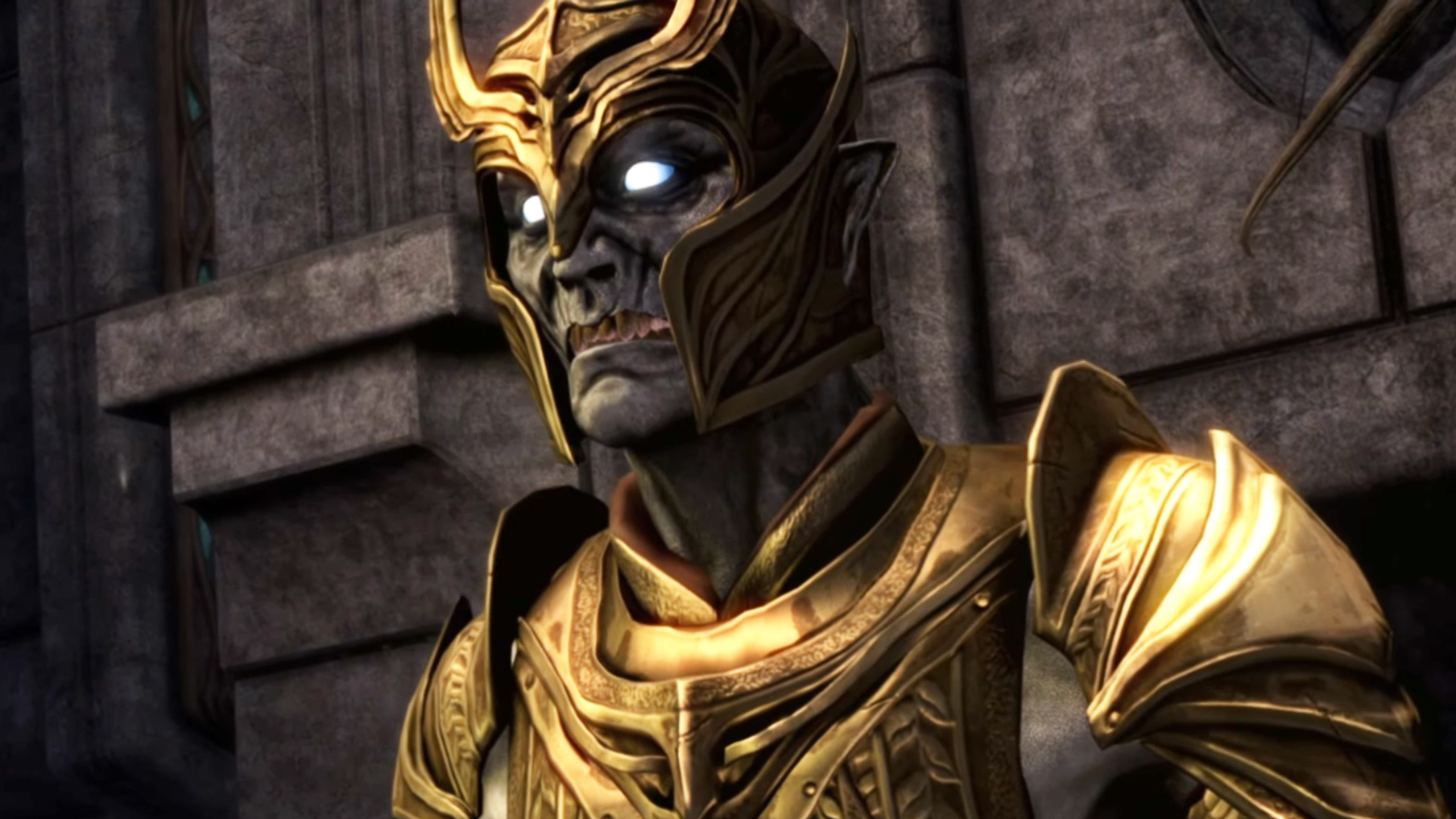
Warzone 2 is a massive leap forward in scale and ambition, held back by a rough launch.
What is it? Modern Warfare 2’s standalone F2P battle royale
Expect to pay: Free to play
Developer: Infinity Ward/Raven Software
Publisher: Activision Blizzard
Reviewed on: Windows 10, Ryzen R7 5700g, 16GB DDR4 Ram, Radeon RX 5700
Multiplayer? Up to 150 players
Link: www.callofduty.com
Despite being bogged down by technical issues and an agonizingly clunky user interface, Call of Duty: Warzone 2 is a massive step up over its predecessor, with clever implementation of AI soldiers, social features that push the chaos to new heights, and perhaps most importantly, a fantastic new map.
A battle royale game is only as good as its map, after all, and Al Mazrah is up there as one of the best I’ve yet played on. A jewel of the Islamic Golden Age, the fictional nation of Udal has been laid low by internal strife and foreign intervention. There’s a buffet of associative imagery available here, with Al Mazrah’s rolling dunes and rocky crags bringing to mind the Gulf War, and the ravaged districts of its urban centers invoking the Battle for Mosul. Half-finished financial districts contrast wonderfully against the battle-scarred mosques, crusader castles, and bazaars, resulting in a map that feels less artificial and, eerily, more lived in than predecessors Verdansk and Caldera.
Vehicles are now vital for crossing those wide-open spaces. They still handle like gigantic RC cars (why was PUBG the only battle royale game to get driving right?), but vehicle-to-vehicle combat is much more enjoyable. One of my favorite new features is the ability to transition from the car seat to the roof with a button press. It’s a lot of fun to get into a chase with another squad and see soldiers crawl out the windows, desperately trying to quickscope the other driver from the roof.
Cars aren’t the only star: Al-Mazrah’s been carved up not only by foreign capital, but climate change as well, leaving a network of man-made waterways that allow for easy traversal via boat. Al-Mazrah city is bisected by a canal, spilling out into a village devoured by encroaching marshlands. God help you if the circle picks Mawizeh as the game-ending area. The war torn district is a rat’s nest of underwater caves perfect for stealthy ambushes, and when combined with obscuring swamp foliage and the visibility-limiting poison gas cloud, fighting in there is the stuff of nightmares.
(Image credit: Activision Blizzard)
Meet me in Al-Mazrah
The mechanics of Warzone 2 are not a significant departure from Warzone 1. It’s Call of Duty combat in a battle royale map, but it’s how Warzone 2 pushes and pulls players into and out of its responsive, punishing gun fights that makes it stand out. One tweak to the standard battle royale format in Warzone 2 is the inclusion of Strongholds, semi-scripted encounters with surprisingly vicious AI that shake up the gear progression in an engaging way. Strongholds serve as a great warmup in the early to mid-game, but aren’t trivial. Gunfights with these guys are brutal, and I never quite felt like I could approach a Stronghold with certainty that I wouldn’t get my ass kicked. I even had a couple sieges interrupted by other squads, and those were easily some of the most harrowing, teeth grinding combat experiences I’ve had in a battle royale game.
I never quite felt like I could approach a Stronghold with certainty that I wouldn’t get my ass kicked.
Those brutal PvEvP shootouts are the main draw of confusingly named sidemode DMZ (the zone is in fact highly militarized), a missions-focused Escape From Tarkov-like that drops you and two squadmates into Al-Mazrah with a to-do list of bombs to defuse and intel to capture. DMZ has isolated progression—if you want a tricked out AK-47, you gotta earn it by hitting strongholds, black sites, and exfiltrating from the map intact. Setting up traps for convoys of infantrymen and doing experiments to determine which of DMZ’s gadgets were best suited to taking down the heavily armored juggernauts lit up a portion of my brain that’s been dormant since I hundred-percented Metal Gear Solid V. The implementation of killstreaks is great—my first match involved assaulting a stronghold and cracking a safe, troops landing en masse just outside the perimeter of the village. A precision airstrike killstreak I picked up earlier in the match proved vital here, the A-10 squadron obliterating the helicopters and their passengers.
DMZ really shines when other players get in the mix and chaotic multi-squad shootouts spread out over a wider area with AI reinforcements. It’s like MW2’s Ground War mode with the freedom of Warzone—as Rich said recently, the mode feels like CoD’s future.
The increase in player agency isn’t just limited to AI Strongholds: there are safes flush with cash and bounty boards with targets littered all over the map. Warzone 2 presents an overwhelming number of choices, and none of the decisions are easy to make. Storm a Stronghold out of fear of missing out a legendary bolt action sniper or upgraded plate carrier, and you may miss a dangerous bounty contract, which always pay out huge sums of cash, enough to purchase your go-to loadout or buy back a dead squadmate. Every BR features some level of risk management, but Warzone 2 excels at making us sweat. My squad frequently broke into impassioned arguments about what to do, if we have enough equipment, if we’re close enough to the circle, who had heard or seen traces of another squad nearby. Sometimes, nearby squads would overhear our arguing and move in for the kill.
(Image credit: Activision Blizzard)
Communication breakdown
The new proximity voice chat is a strong addition. On top of ensuring that a loud-mouthed fourteen-year-old will never get the drop on you ever again, voice chat makes Gulag shootouts hilarious. In every match I loudly yell, “Okay we are both going to the right!” and then go to the left instead. It must work nine out of ten times. It’s not just the gulag, either, every match so far has been made better by its inclusion—hearing a voice nearby has always elicited either frantic shushing or berserk war cries from my party. Remember the OG Modern Warfare 2 lobbies? Warzone 2 is less toxic, but just as fun.
Warzone 2’s cohesive visual identity is as of yet unburdened by gaudy cosmetics and ludicrous operator skins.
The Gulag system has also received a substantial overhaul. Now it’s a lobby that fills up with prisoners and stots them into random 2v2 deathmatches in a large arena littered with weapon pickups. If the match drags on too long, the Jailer, a minigun wielding juggernaut, will jump down, eager to make you “food for the dogs”. The new Gulag rules. Being able to rely on a teammate is a welcome switch-up from the sweaty 1v1s of Warzone 1.0, and the opportunity for both teams to team up and go after the Jailer in pursuit of freedom gives the whole thing a lot more depth.
The art design is a welcome return to simplicity, and Warzone 2’s cohesive visual identity is as of yet unburdened by gaudy cosmetics and ludicrous operator skins. Even if the Season 1 Battle Pass rewards look like overdesigned airsoft guns, there’s at least a theme rather than a hodgepodge of styles. MW2’s stellar line-up of royalty free gun approximations integrates well with the near-future war aesthetic, though the hyper-tacticool matte plastic battle pass guns often feel at odds with a map that has an uncanny resemblance to conflict photography. Visually, Warzone 2 is a major improvement over the bloated Warzone 1.0.
The sound design is still incredible, owing to some clever mixing and layering. Letting off a salvo of 7.62 rounds from an RPD at a passing vehicle is made all the better when you hear that crunch of ceramic armor plates shattering. Reloads are accented by the jangling of belt-fed bullets and scuffing of metal magazines on composite receivers. Gunfire is especially distinctive —it feels great to be able to identify the pops and crackles of nearby gunfire as belonging to a specific caliber of bullet. In a meta that favors the AK-74u, it’s saved me from getting melted in CQC a couple times.
(Image credit: Activision Blizzard)
Failure to launch
One thing I’m not sold on is the user interface. Almost nothing about the inventory system is intuitive, responsive, or informative. Grabbing items is unwieldy, inviting death in tense moments. The minimap is no better, a torrent of hard to read brown-gray-green icons and overly complex symbols that randomly change to primary colors. The Stronghold system, as much as I love it, is wildly unintuitive, and I still don’t totally understand why the icon changes from white to blue when you defuse the bomb. I suspect most other players won’t, either.
Performance and stability leave a lot to be desired, the worst of it being extreme stuttering when dropping at the start of a round. It’s so bad that it’s a real issue for coordinating group drops—I can’t reliably chute down to my preferred drop site when the game locks up for five to ten seconds.
(Image credit: Activision Blizzard)
Some early issues with hit detection and netcode seem to have been addressed by a wave of patches, but random crashes and frame stuttering that manifests only at the most inconvenient times have soured what’s been a mostly fantastic time in Al Mazrah. Warzone 2’s rough launch is hardly surprising to veteran players, and marathons aren’t won in opening minutes, but it’s still frustrating for the moment. Worth flagging is that in my brief time in Warzone 2, I haven’t seen the suspect killcams and downright obvious aimbotting that were so oh so common in Warzone 1. Technical issues aside, it’s a huge improvement to the Warzone experience to not be left wondering if your assailants are cheating.
Some of Warzone’s accessibility features deserve praise, too. There’s the standard fare, motion sickness reduction and all the color blindness options players rightfully expect, but there’s also extremely in-depth options for mouse sensitivity tuning. I’ve always had difficulty playing FPS games on mouse and keyboard at a high level thanks to a mild cerebral palsy, so I’ve increased the sensitivity for close range weapons to give me an edge in CQC, and dropped the sensitivity for rifles to help with stability. Warzone 2’s incredibly in-depth input tuning is a blessing, making it one of the few games I don’t have to play with a brace.
Ultimately, Warzone 2 is a massive step in the right direction, even if its full potential is still constrained by a myriad of technical issues. Al Mazrah is a more dangerous place than Verdansk or Caldera. In the long game, there are no safe choices, no playstyle that guarantees you’ll make it to the final circle. It’s more intense than any other battle royale game out there now. For the first time in what feels like ages, Call of Duty is innovating again.



